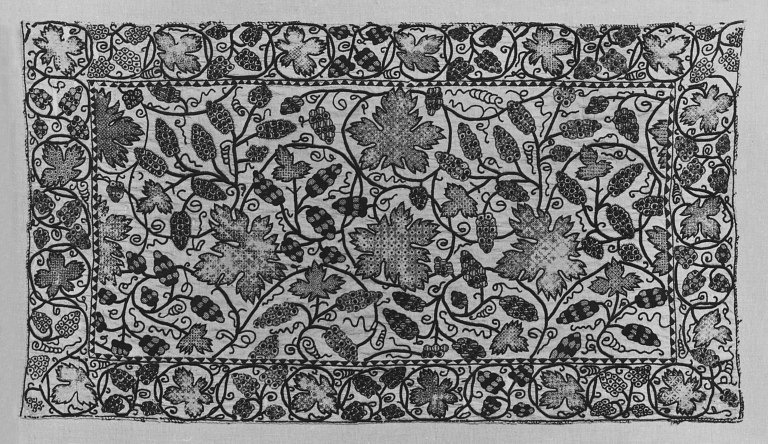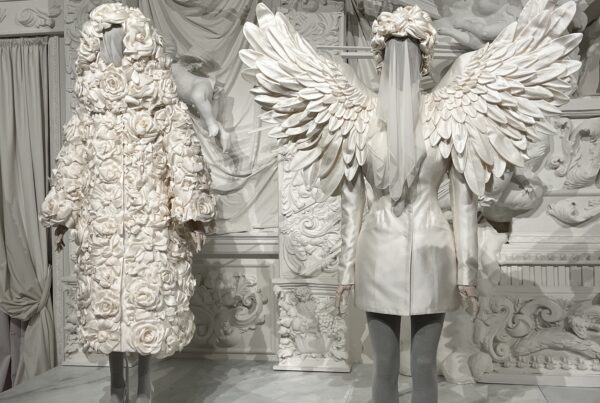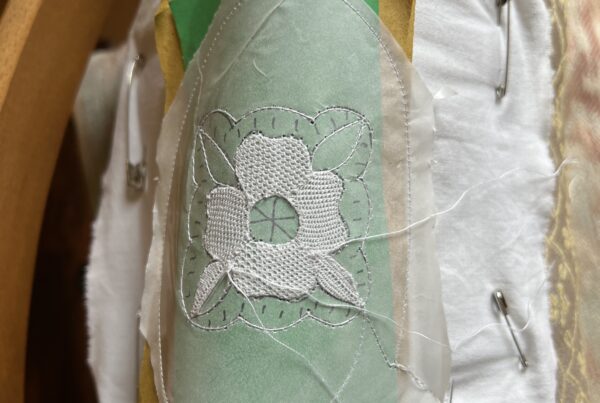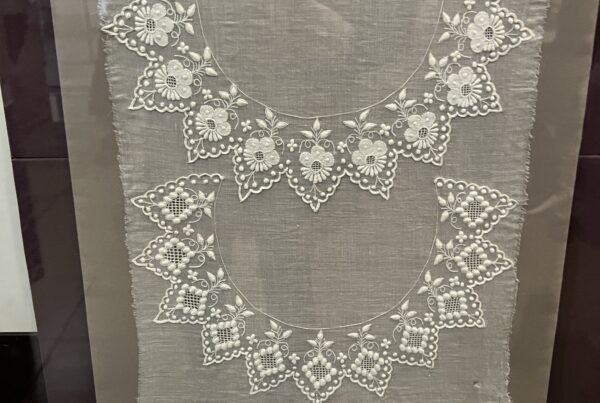Il Blackwork è un metodo di ricamo a fili contati che utilizza punti diritti in un colore a contrasto su tessuti a trama regolare.
Le vere origini di questo tipo di ricamo sembrano risalire ai Mori e agli Arabi, che lo introdussero in Inghilterra nel XIII secolo. Ciò avvenne con il ritorno di soldati e nobili dalle Crociate in Terra Santa.
Si ritiene che la principessa spagnola Caterina d’Aragona abbia portato il Blackwork in Inghilterra nel 1501. Dopo il matrimonio con Enrico VIII, la sua passione per il ricamo influenzò significativamente la corte inglese per oltre vent’anni, fino al loro divorzio. Il punto più usato da Caterina, noto come “ricamo spagnolo” (o Spanishwork), divenne parte della cultura spagnola durante il dominio dei Mori e fu successivamente ribattezzato “Blackwork” dopo l’annullamento del matrimonio nel 1533.
Il ricamo Blackwork non aveva solo scopi decorativi, ma veniva anche utilizzato per rinforzare colletti e polsini e per mascherare lo sporco, data la scarsa igiene dell’epoca. Le classi più basse usavano spesso il Blackwork come alternativa economica al pizzo, che era molto costoso e difficile da reperire.
Come iniziare un progetto di Blackwork
Per iniziare, è necessario un tessuto a trama regolare come l’Aida, un tessuto di cotone specifico per i ricami a fili contati, caratterizzato da blocchi formati da due fili intrecciati invece di singoli fili. I principianti dovrebbero evitare tessuti molto fini, poiché è difficile contare accuratamente i fili.
Per quanto riguarda i fili, ci sono molte alternative:
- Cotone Mouliné (DMC Mouliné Special): composto da sei fili separabili per ottenere spessori e sfumature diverse.
- Cotone Perlé n. 5 e 8: ha una finitura lucida e una torsione morbida.
- Coton à broder n. 16: un filo singolo o a tre capi, equivalente a due fili di Perlé o Mouliné.
- Cotone per cucire comune: più difficile da lavorare rispetto al Mouliné, ma offre un effetto nitido.
Per il ricamo Blackwork, così come per l’Hardanger, è consigliabile utilizzare un ago smussato, poiché gli aghi affilati possono perforare i fili del tessuto, deformandone i fori.
Altri materiali essenziali
Un altro strumento fondamentale è il telaio, disponibile in varie dimensioni e tipi, a seconda delle dimensioni del ricamo. È importante mantenere il tessuto ben teso.
- Cerchi da ricamo: ideali per disegni piccoli, poiché tutto il ricamo dovrebbe rientrare all’interno del cerchio. Spostare il cerchio sul lavoro può deformare i punti e segnare alcuni tipi di tessuto.
- Telai rettangolari: perfetti per disegni più grandi, mantengono il tessuto teso durante tutto il processo.
Scegliere i disegni
Molti ricamatori utilizzano kit preconfezionati acquistabili in negozi di artigianato o riviste. Con l’esperienza, però, potresti voler creare i tuoi disegni. Ti consiglio di trarre ispirazione dai ricami storici presenti in musei, mostre o gallerie online.
Il ricamo Blackwork è una dimostrazione del fascino intramontabile dell’arte fatta a mano. La sua evoluzione, da applicazione pratica ad arte decorativa, ne evidenzia la versatilità e il fascino. Che tu scelga di seguire modelli tradizionali o innovare con le tue creazioni, il Blackwork offre un’esperienza appagante e creativa. Immergiti in quest’arte affascinante e scopri la gioia di dar vita a una bellezza senza tempo, un punto alla volta.




